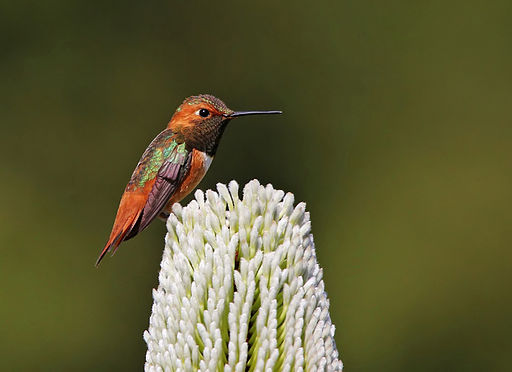State of the Birds Report: "We all will see the effects of changing climate in our own backyards"

Climate change threatens nearly half the bird species in the continental United States and Canada, including the Bald Eagle and dozens of iconic birds like the Common Loon, Baltimore Oriole and Brown Pelican, according to a new study by National Audubon Society.
The study identifies 126 species that will lose more than 50 percent of their current ranges — in some cases up to 100 percent — by 2050, with no possibility of moving elsewhere if global warming continues on its current trajectory. A further 188 species face more than 50 percent range loss by 2080 but may be able to make up some of this loss if they are able to colonize new areas. These 314 species include many not previously considered at risk. The report indicates that numerous extinctions are likely if global temperature increases are not stopped.
"It's a punch in the gut. The greatest threat our birds face today is global warming," said Audubon Chief Scientist Gary Langham, who led the investigation. "That's our unequivocal conclusion after seven years of painstakingly careful and thorough research. Global warming threatens the basic fabric of life on which birds — and the rest of us — depend, and we have to act quickly and decisively if we are going to avoid catastrophe for them and for us."
"The prospect of such staggering loss is horrific, but we can build a bridge to the future for America's birds," said Audubon President and CEO David Yarnold. "This report is a roadmap, and it's telling us two big things: We have to preserve and protect the places birds live, and we have to work together to reduce the severity of global warming."
Langham and other Audubon ornithologists analyzed 30 years of North American climate data and tens of thousands of historical bird observations from the Audubon Christmas Bird Count and U.S. Geological Survey's North American Breeding Bird Survey to understand the links between where birds live and the climatic conditions that support them. Understanding those links allows scientists to project where birds are likely to be able to survive — and not survive — in the future.
While some species will be able to adapt to shifting climates, many of North America's most familiar and iconic species will not. The national symbol of the United States, the Bald Eagle, could see its current summer range decrease by nearly 75 percent in the next 65 years. The Common Loon, icon of the north and state bird of Minnesota, may no longer be able to breed in the lower 48 states by 2080. The Baltimore Oriole, state bird of Maryland and mascot for Baltimore's baseball team, may no longer nest in the Mid-Atlantic, shifting north instead to follow the climatic conditions it requires. Other state birds at risk include Brown Pelican (Louisiana), California Gull (Utah), Hermit Thrush (Vermont), Mountain Bluebird (Idaho and Nevada), Ruffed Grouse (Pennsylvania), Purple Finch (New Hampshire) and Wood Thrush (Washington, DC).
Pages: 1 · 2
More Articles
- Ferida's Wolff's Backyard: Geese Coming Home
- Jo Freeman Reviews Russell Lee: A Photographer's Life and Legacy
- Ferida Wolff's Backyard: Corn Rows and Hurricane Ida
- Kaiser Family Foundation: Wildfire Smoke Is Here to Stay. Here’s How to Clean the Air Inside Your Home
- The US Department of State Presents: A Whirling Porcelain Coral Reef Draws Attention to the Cost of Climate Change
- Jill Norgren Reviews The Upswing: How America Came Together a Century Ago and How We Can Do It Again ... An intriguing book about change and turning points
- Nichola Gutgold Writes: “Klob-mentum” and the Pronouns To Help
- Ferida Wolff's Backyard's Weather Puzzles: A Strange Time of Year Here; Jigsaw Puzzles As Cognitive Enrichment
- Pressing Issues State Lawmakers Are Facing as They Begin Their Work: Voting Access, Vaping, Natural Disaster Prep, Affordable Housing and Health Care
- Survival Architecture and the Art of Resilience: Linda Gass at the Museum of Craft and Design






